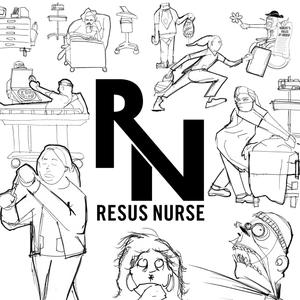011 Low-dose ketamine for pain administration explained! w/Sergey M. Motov, MD
Sergey M. Motov, MD, FAAEM
Courtesy of Sergey M. Motov, MD
Twitter @painfreeED
Dr. Motov is an Emergency Medicine Physician practicing in the Department of Emergency Medicine at Maimonides Medical Center, Brooklyn, New York. He graduated from Medical Academy of Latvia and completed his EM residency at Maimonides Medical Center. Dr. Motov is an Associate Research Director who is passionate about safe and effective pain management in the ED. He has numerous publications on the subject of opioid alternatives in pain management, and is actively involved in growing this body of work both nationally and globally.
"In the 7 years I've been administering ketamine for this application, I've never had a patient walk into my ER and ask, 'Can I get ketamine?'" - Sergey Motov, MD
Who gets low-dose ketamine for analgesia?
Patients who fail initial 3+ opioid doses.
Patients generally with chronic pain, neuropathic pain, oncology pain, opioid tolerance, polytrauma.
Great medication for treating pain and doesn't have the same addictive qualities as opioids.
Ketamine is abused, namely in China. In the United States, we don't see it as much.
Low-Dose Ketamine Bolus Dose for Analgesia
0.3mg/kg in NS 100mL infused over 15 minutes (400mL/hr)
Max dose 30mg
**Reduces the feeling of unreality in comparison to administering IV push. Basically, your patient won't freak out! (at least much less episodes!)
Bolus Administration Pearls:
No pumps are needed for the bolus dose administered as a short infusion. But doesn't hurt either.
No monitors needed.
Low-Dose Ketamine Drip Dose for Analgesia
0.1mg/kg as a continuous infusion
Titrate every 30 minutes as needed - involve provider when titrating.
0.1-0.3mg/kg
0.4-0.7mg/kg --> you've now entered a recreational dose
Preparation:
Ketamine 100mg in NS 100mL = 1:1 ratio
Infusion Pearls:
Must use an iv pump to administer the infusion.
Use nursing judgement for telemonitoring.
Majority of patients will get discharged after 2-3 hours of continuous therapy.
Look at the presentation of the patient. Not everyone will need an infusion. Many patients will find relief with the bolus dose alone. Some may need both the bolus and infusion.
Dose obese patients with an ideal body weight.
Logistics:
Ketamine comes in 2 different concentrations: 10mg/mL and 50mg/mL
Much easier to calculate and draw up ketamine with the 10mg/mL concentration with this application!
Worried about waste?
Pharmacy can keep a single dose vial with 10mg/mL concentration for 24 hours and use it as a multi-dose vial.
They will have to prepare all of your ketamine bolus infusions and ketamine continuous infusions - wouldn't that be nice?
Now Listen to the Episode...
References
Kurdi MS, Theerth KA, Deva RS. Ketamine: Current applications in anesthesia, pain, and critical care. Anesthesia, Essays and Researches. 2014;8(3):283-290. doi:10.4103/0259-1162.143110. https://www.ncbi.nlm.nih.gov/pmc/articles/PMC4258981/
Motov, S., Rockoff, B., Cohen, V., Pushkar, I., Likourezos, A., Mckay, C., . . . Fromm, C. (2015). Intravenous Subdissociative-Dose Ketamine Versus Morphine for Analgesia in the Emergency Department: A Randomized Controlled Trial. Annals of Emergency Medicine, 66(3). doi:10.1016/j.annemergmed.2015.03.004 https://www.ncbi.nlm.nih.gov/pubmed/25817884
Lee, E. N., & Lee, J. H. (2016, October 27). The Effects of Low-Dose Ketamine on Acute Pain in an Emergency Setting: A Systematic Review and Meta-Analysis. https://www.ncbi.nlm.nih.gov/pubmed/27788221
Motov S et al. A Prospective Randomized, Double-Dummy Trial Comparing Intravenous Push Dose of Low Dose Ketamine to Short Infusion of Low Dose Ketamine for Treatment of Moderate to Severe Pain in the Emergency Department. AJEM 2017; S0735 – 6757(17): 30171 – 7. PMID: 28283340
Ketamine: How to Use it Fearlessly For All its Indications by Reuben Strayer. (2015, December 06).
13 October 2017, 11:03 pm
